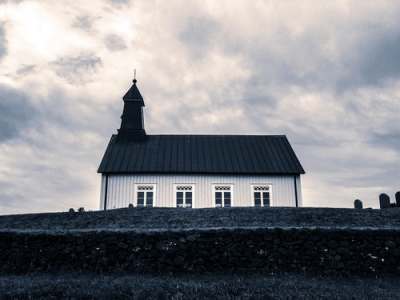Rural communities are dying. The local church is their only solution

Trust in institutions is cratering everywhere, but at least in urban and suburban communities, those institutions still exist. The same cannot be said for rural America. In the last few decades, rural communities have lost over 200 hospitals. Over 2,100 local newspapers have shut down. We’ve lost countless high schools and even entire school districts. Once ubiquitous veterans clubs are dwindling. As the former mayor of rural Huntingburg, Indiana (population 6,495), I am not condescending to rural America nor telling a tired or misleading “woe is me” tale.
I’m laying out a hard fact with immense policy implications. While other institutions disappear, churches hold a critical place in rural America. In rural America, churches are many times the last institution standing, the center of civic life, and a trusted resource. When the Indiana University Center for Rural Engagement (where I am Executive Director) asked rural residents to rank their community assets, churches and faith organizations consistently rank near the top.
Policymakers who care about rural America — which should be all of them — should not fight the tide. We should recognize the church as an important partner in connecting communities with resources they need — healthcare to housing. Pastors are on the front lines. They know their neighbors and the struggles they face. We need to support pastors with tools that fit their community’s needs, make government spending more efficient, and, most importantly, help rural America reverse its decline.
The kneejerk complaint is that such partnerships violate the “separation of church and state,” but both the letter of the law and ample precedent should eliminate this concern. First, partnerships like these would cross denominational lines and extend beyond the walls of the church, so there would be no “establishment” of a religion. Further, we already run educational services through parochial schools, churches often serve as a “basecamp” in the aftermath of disasters, and religious organizations receive public funding to run food pantries. We’re clearly comfortable with religious institutions providing services when the chips are down.
The chips are very much down in rural America right now. “Deaths of despair” have skyrocketed. Life expectancy in rural counties is declining and inflation has hammered rural America. While rural America saw substantial job recovery following the 2020 recession, that has not translated into increased median incomes, leaving rural families worse off than before. There is a reason rural areas are losing population.
As a mayor, my job was to get stuff done effectively. Pragmatism is more important than ideology; ideas not grounded in local realities inevitably fail. The fact is that churches can effectively deliver the resources that would reverse these concerning trends.
First, people in rural communities trust that their pastor and their fellow congregants have their best interests at heart. That trust is hard to come by; they don’t believe the government, popular culture, or even law enforcement care about them or their problems. But they trust the church. They’re more likely than their urban counterparts to belong to a church, to consider themselves religious, and to attend services. They know when the pastor asks how they’re doing, their pastor cares about the answer. They know their pastor will try to help or at least listen to their problems.
It would be great, then, if we could put that pastor in the position to help.
When we do, the data demonstrates struggling people achieve better outcomes. For instance, in traditionally underserved communities, churches have been among the most effective conduits of healthcare, from treatment for substance use and mental health to chronic health problems like obesity, diabetes, and cardiovascular and respiratory issues.
There is, however, a more commonplace reason than trust that churches can deliver better healthcare outcomes: it’s the one place where much of the community is guaranteed to show up at least once a week. Nurses or nurse practitioners — some of whom may themselves be congregants — can set up “office hours” after services to dispense basic healthcare advice or connect parishioners with resources. They can check in on whether diabetes patients are taking their insulin correctly or if asthma patients have enough inhalers. Further, social bonds are among the most important factors in addiction recovery, so seeing a minister or nurse who cares about you every week can be the difference between staying sober and falling off the wagon.
It’s not just healthcare. Rural Americans’ faith that their church has their best interest at heart means they will listen when the church offers advice and resources for their most important financial decisions (i.e., housing and home ownership) and their most important human ones (childcare and how to protect their kids).
We cannot place an administrative burden on churches. They will need support from government and private partners, social service agencies, and, yes, universities. We must give them that support. Governments want to help people in rural America, but people’s lack of faith in government — coupled with the government’s failure to understand on-the-ground dynamics in rural towns–means they cannot. So, if we care about rural America, we have to get over ourselves and work through local churches.
I hope America has the discipline to follow through.
Denny Spinner is the former mayor of Huntingburg, Indiana and Executive Director of the Indiana University Center for Rural Engagement.




























